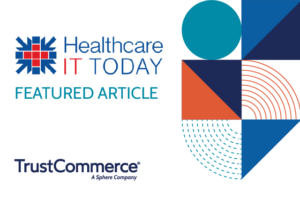Healthcare providers have been confronted with a slew of financial and operational challenges in 2023, including rising labor costs, razor-thin margins, and staff shortages. For example:
- A report from the American Hospital Association notes that healthcare providers are currently facing increasing costs associated with labor, drugs, and supplies and an overload of administrative activities related to burdensome billing and insurance tasks.
- Patient acuity has grown, as many patients deferred care during the COVID-19 pandemic, exacerbating chronic conditions.
- Workforce shortages have led to bottlenecks in routine tasks, such as patient discharge.
- Hospital expenses grew by 17.5% between 2019 and 2022, leading to operating losses for some hospitals and closures for those most severely affected.
Despite such challenges, with the right patient payment systems, providers can relieve many of these burdens and diminish financial and operational barriers. Following are some key trends to watch during 2024, as healthcare providers continue to work hard to create efficiencies that can reduce costs and make care more affordable.
- Healthcare continues to grow more retail-like: For providers, a key component of increasing patient loyalty includes giving patients convenient and easy-to-use digital tools similar to those they have come to depend on in retail, banking, groceries and other industries. Indeed, patients have grown more aware of healthcare’s digital gaps, which often create a time-consuming, confusing, and overly complicated experience. When interacting with their healthcare providers, patients want consumerism healthcare, a more retail-like experience that is engaging, flexibility and transparent.
To accommodate demand for more technology-enabled convenience throughout the patient journey, healthcare providers will increase their adoption of tools that deliver greater transparency and convenience, such as appointment self-scheduling, pre-service check-in and cost estimates, acceptance of next-generation patient payment methods, flexible payment plans, and card-on-file options.
- Boosting staff efficiency is paramount: For many provider organizations, healthcare worker shortages won’t go away any time soon. To offset potential shortages, providers will seek opportunities to automate various tasks, such as enabling patients to self-schedule appointments, to free staff for more face-to-face patient interactions – which simultaneously can boost job satisfaction and improve the patient experience.
- A focus on security and compliance: The cost of a breach in the healthcare industry has increased 42% since 2020, according to IBM’s most recent annual report on data breaches. For the 12th year in a row, healthcare had the highest average data breach cost of any industry at $10.1 million. It is important to manage the risk associated with transmitting sensitive business and cardholder data.
To protect their data, healthcare providers will continue to embrace technologies that deliver comprehensive risk management and security such as validated point to point encryption and tokenization. TrustCommerce, a Sphere company, offers patient payment solutions that safeguard payment data and reduce PCI scope.
- Integrations to improve interoperability: Healthcare providers are seeking opportunities to boost staff efficiencies and streamline workflows. One option is to integrate electronic health records and practice management systems with patient payment systems, providing a seamless workflow and greater efficiency. To this end, TrustCommerce® is integrated with numerous EHR and PM solutions, including Epic, Veradigm® and athenaIDX revenue cycle management solution.
To learn more about TrustCommerce’s secure payment processing, schedule a free demo today or download our whitepaper to learn what types of solutions healthcare providers are prioritizing to make patient payments easier to help improve both their collection yield and speed.






